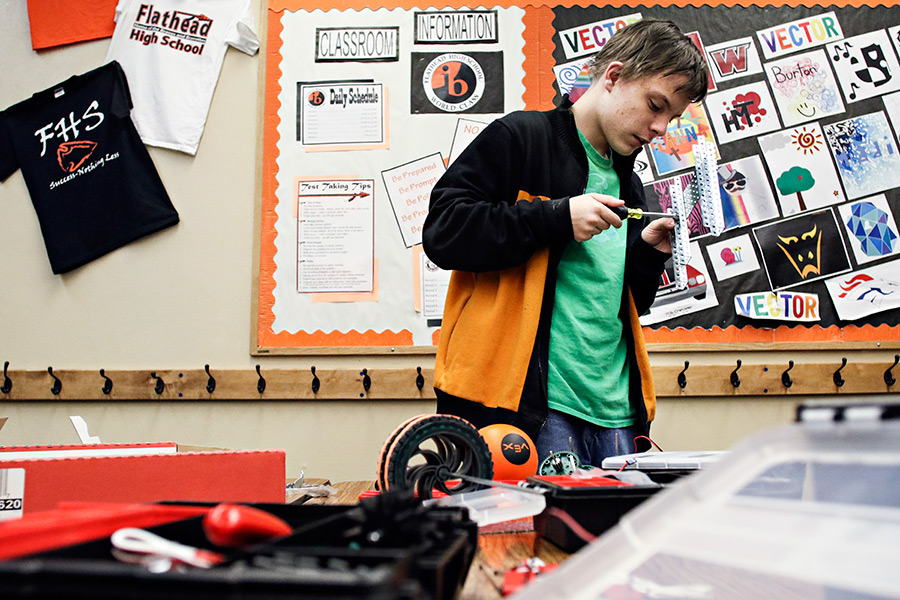STEM with a Competitive Edge
Building robots and using drones, Flathead High School's Tech Club offers students a hands-on way to connect with technology
By Molly Priddy
After the final bell rang for the day at Flathead High School, students streamed out the doors to their vehicles, headed off to home, jobs, or athletic practices. But back at the school, groups of students stuck around to continue pursuing their interests through clubs.
In Tara Barnes’ room, three teenaged boys gathered around a small table, sorting various pieces of metal and machinery into suitable piles.
The students, all members of the school’s Tech Club, chattered to one another as they devised the appropriate process of parsing out the parts for the robot they were building: once finalized, this robot will be able to pick up a ball from the floor and launch it into a hoop and will eventually join a melee of other robots built by students at other schools.
Freshman Conner Olson, 15, said he joined the club because it coincided with his existing interests, and so far, it has been worth every extra minute spent at school.
“It has been extremely fun so far,” Olson said, picking his way through the robot’s pieces.
The Tech Club offers students a variety of high-end projects to complete, wherein the students not only build the hardware, but they program the software as well. As a part of the Technology Student Association, Tech Club offers its dozen or so members the chance to get on board with the rapidly changing world of high-tech, which looks like it will play a larger role in most students’ lives.
It’s a way of promoting careers in STEM – science, technology, engineering, and math – while also keeping it fun and interesting.
Teacher Tara Barnes, who is an advisor for the club, said the group was able to retain a drone and a robot project through grants and participation from teachers as well as community members. FHS teacher Ben Butts helped launch the robot project because of his extensive background in robotics, and Adam Paugh, director of business development at uAvionix, got involved with the drone project.
Paugh, who drops by the club on Wednesdays to provide assistance to students, said he heard of the project in which students built and programmed a drone from the ground up. The UAS4STEM program has students build a Quadzilla drone then program it for use in the field.
Once the drone is built and programmed, the students will head to a competition toward the end of the school year during which they will use their drone on a search-and-rescue type mission, seeking hidden items in an open field and mapping them via the drone. The team that maps the most items the quickest wins.
“It seemed like a really cool project,” Paugh said.
Paugh, whose previous work includes being a founder of Quadrocopter, helped guide the students through ground school, during which they learn airmanship and how to fly the machines. It’s not easy material to slog through, Paugh said, especially for three weeks outside of school time. But all the kids stuck it out, and now the eight-person team is nearly ready to launch their drone.
It’s important to support students’ interests in STEM, Paugh said, because so much of the world is now based around technology. If these kids can nurture their talent while they’re still in high school, it could help them navigate their future careers, he said.
“I thought it would be important for them to be familiar with the technology,” Paugh said.
So far, the students are taking to it like a duck to water. Several members are there before and after school, and sometimes even during lunch, Barnes said. They’re connecting to what they’re creating, and having fun with a new type of after-school event, one in which the fruits of their mental labor are tested and rewarded.
“It’s a friendly robot competition,” Olson said, laughing.